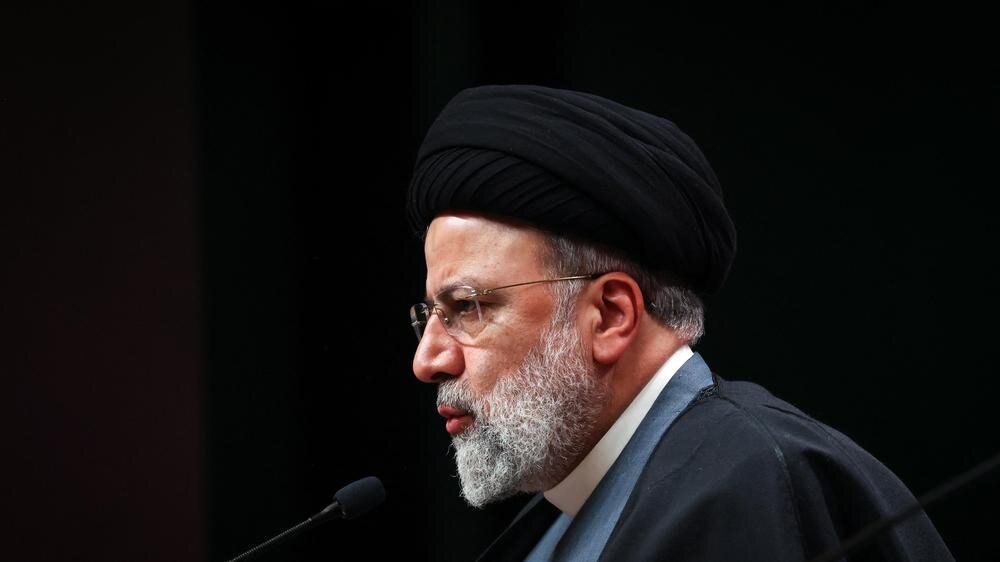A tireless president
On President Raisi’s unyielding commitment to serving his country

TEHRAN - "Never in my life had I imagined that I would even meet a local official here, let alone meet the President of the country," that’s how a young worker of a remote palm plantation in the southern Iranian province of Bushehr expressed his shock at an unprecedented visit by President Ebrahim Raisi.
That day, President Raisi was conducting one of his first trips within the country, shortly after assuming office in August of 2021. The astonishment and disbelief visible on the face of the young man in Bushehr became a common sight in the short three years that followed. From a disabled woman working on a sewing machine in the easternmost region of Iran, to a Kurdish shop owner in the Western city of Sanandaj, and an elderly woman who halted the president’s car in the middle of a deserted road in central Iran, people found it challenging to adapt to the fact that the second-in-command of the country preferred to personally assess the situation across the nation and listen to citizens’ concerns firsthand.
"I don’t think that we have the right to say we are tired. Did Martyr Soleimani ever talk about fatigue or tiredness? Our duty is to serve people under any conditions," Raisi stated during an interview with Iranian TV when questioned about how he likes to rest when fatigued from his demanding duties.
Once we take a moment to deeply reflect on President Raisi’s actions and statements, the fact that he lost his life during one of his many domestic trips may seem less shocking. His final moments in office were spent conversing with mine workers in northwestern Iran, following the inauguration of a dam alongside his Azeri counterpart Ilham Aliyev at the Iran-Azerbaijan border.
"I am committed to serving the people of our beloved country. Even those that didn’t vote for me, I am their servant too," Raisi declared at the beginning of his presidency. For many, the official’s demise in a helicopter crash on May 19, while en route to inaugurate the second project of the day in northwestern Iran, stands as a testament to the fact that he remained true to the commitment he made at the start of his tenure, until the end.
Throughout his time as the President, Ebrahim Raisi inaugurated thousands of infrastructural, economic, and cultural projects across the country.
The Challenges President Raisi faced, and the problems that he solved
The beginning of the late official’s tenure began with some of the biggest challenges Iran has faced since the victory of the Islamic Revolution: The Covid-19 pandemic and an economy battered by U.S. sanctions.
After months of stagnant progress in the production and import of covid-19 vaccine, President Raisi managed to curb the sharp rate of casualties by taking the matters into his own hands. It is said that he managed to facilitate the import of millions of doses of vaccine after he personally made a plea to Chinese President Xi Jin Ping.
Meanwhile, the diligent leader began efforts to alleviate economic pressures on Iran by actively pursuing both the termination and neutralization of sanctions.
President Raisi believed that while the revival of JCPOA can be ideal, the economic well-being of the Iranian populace should not be tethered to the pact. That’s why he opted instead for closer and more expansive relationships with regional and global partners.
Throughout his 34-month tenure, President Raisi embarked on 29 diplomatic journeys to 23 nations. His visits included destinations such as Tajikistan, Turkmenistan, Russia, Qatar, Oman, Uzbekistan, Kazakhstan, China, Syria, Indonesia, Venezuela, Nicaragua, Cuba, Kenya, Uganda, Zimbabwe, South Africa, Saudi Arabia, Turkey, Algeria, Pakistan, Sri Lanka, the UN headquarters in New York, and Azerbaijan.
The outcomes of these trips ranged from numerous bilateral agreements and a reconciliation pact with Saudi Arabia to Iran’s entry into BRICS and the Shanghai Cooperation Organisation. Economic growth in Iran surged, inflation rates were finally reined in after a decade-long struggle, and a recent deal with the International Atomic Energy Agency signified a significant step toward aligning Iran’s stance with Western nations on the JCPOA resurgence.
But no matter how much we talk about President Raisi’s efforts and achievements, it seems that media recognition and praise were not really what he was after. President Raisi saw himself as part of a bigger picture. For him, the various roles he was appointed to throughout his life were merely opportunities to contribute to a common purpose. He viewed that common purpose as the prosperity of Iran, for which each individual leader, whether a president, minister, commander, mayor, or chief acted as a means.
As the late founder of the Islamic Republic Imam Khomeini mentioned in one of his wills "With the departure of a servant, there will be no disruption in the ironclad resistance of the nation, for better and mightier servants will emerge, and God is the protector of this nation”.
President Raisi lost his life while serving his people. He might be gone, but the legacy and cornerstones he set, are not going anywhere.
